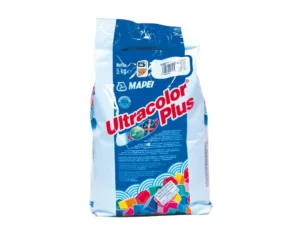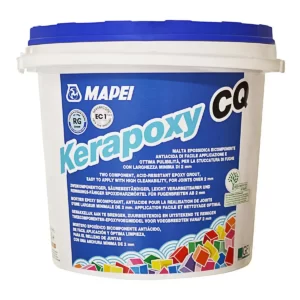How to choose tile grout?
What is the importance of tile grout?
what are the best practices?
Grout lines play a critical role in making tiling more durable.
Mapei Technical Services’ Italian division provides a brief technical note to explain how the performance properties of grout lines have impacted sites all over the world, having a significant impact on the durability and performance levels of ceramic floor and wall dressings.
Joints are an essential component of what many standards define as ceramic tiling. They are important for both aesthetic and technical reasons that contribute to the final result.
We discuss joint technical aspects because they increase the durability of ceramic tiling by lowering the risk of problems such as detached tiles, cracking, and out-of-flatness, all of which have a direct impact on the expected service life of the ceramic covering itself. Ceramic tiling can have its service life extended by properly designed and filled joints.
And how do they accomplish this?

How to choose tile grout
Joints are essentially a method of maintaining the continuity of a tiled surface while also modifying its modulus of elasticity, making the entire tile/grout line system more “deformable” and, as a result, able to withstand the dimensional stresses it will face during its service life.
An area of ceramic tiling with no joints has nearly the same modulus of elasticity as a single large ceramic tile. As a result, the surface will be extremely rigid and more likely to break or detach from the substrate than an area of tiling with joints, due to dimensional instability in the substrate caused primarily by hygrometric shrinkage of the substrate (if it is not fully cured when installing the tiles), expansion or contraction in the substrate or tiling (if there are significant temperature variations), and the installation surface’s deformability (due to flexural deformation).
To summarize, a covering with a lower modulus of elasticity will absorb these effects more effectively and reduce the risk of breakage and/or detachment. As a result, joints are critical for ensuring the integrity and durability of ceramic tiling.
NOT JUST DURABILITY
It is also important to note that having joints in tiling has other advantages in terms of technical performance. They reduce the impact of differences in tile dimensions and make it easier to control that the joints are filled evenly and last longer, extending the service life of whatever material is used to fill them.
Not to be missed is the aesthetic aspect of joints, which is achieved during the execution phase as well as the sealing/grouting phase of the joints, during which the product characteristics become extremely important. It is therefore critical to rely on high-performance products of high quality, such as KERACOLOR, ULTRACOLOR PLUS, and KERAPOXY and FLEXCOLOR product ranges comprising the cementitious grouts by Mapei.

How to choose tile grout
THE BEST GROUT FOR EACH TYPE OF JOINT
The material to be used is determined by the performance properties required as well as the area of use.
Epoxy grouts are preferred when no absorption, high chemical resistance, and a high level of hygiene are required, such as in
industrial floors, industrial kitchens, canteens, laboratories, and so on.
All products in the KERAPOXY family can be used for floor, wall, and work-table joints in accordance with HACCP principles (Hazard Analysis and Critical Control Points) guidelines and the requirements of EC Regulation No. 852/2004 for food hygiene
High performance acrylic and cementitious grouts, such as the FLEXCOLOR, KERACOLOR, and ULTRACOLOR PLUS product lines, are typically used in environments where a high-performance product is required without achieving the same level of characteristics as epoxy grout.
Mapei cementitious grouts, on the other hand, have properties such as DropEffect® (water repellence) and BioBlock® (anti-mould).

FLEXCOLOR https://alio-mar.com/

KERACOLOR https://alio-mar.com/

ULTRACOLOR PLUS
EPOXY GROUTS
IIt is also worth noting that epoxy grouts are gaining popularity in the residential sector.
The constant increase in the size of tile formats over the last few years has, on the one hand, resulted in a reduction in the overall area joints have to cover, but on the other hand, has made the role joints play in tiling systems even more important due to the higher levels of induced stress generated by larger formats and the need to reduce the “rigidity” of tiling as much as possible.
Low consumption rates per square meter, as well as the introduction of easier-to-use epoxy grouts (a case worthy of mention for us in Italy, for example, was KERAPOXY DESIGN or KERAPOXY CQ), have encouraged the use of epoxy grouts in residential/commercial buildings, where they were previously only used in the industrial sector. Nowadays, epoxy grouts are commonly used in homes and businesses, or at least in more high-traffic areas such as bathrooms and kitchens, where a nonabsorbent grout that is easier to clean and maintain is the ideal solution.

KERAPOXY DESIGN

KERAPOXY DESIGN Alio-Mar
It is worth noting at this point that KERAPOXY CQ has been certified by the University of Modena (Italy) as a grouting mortar resistant to the formation and proliferation of microorganisms, which means it is particularly suitable for use in combination with ceramic tiles with similar properties, such as in the healthcare sector, to create ceramic surfaces with extremely high levels of hygiene.

KERAPOXY CQ alio-mar

KERAPOXY CQ alio-mar
It is noticeable that joints play a critical role in the design and installation of ceramic coverings, and their presence has a direct impact on the durability and quality of ceramic coverings. It is therefore critical to design tiling with joints dimensioned according to the specific characteristics of each project and the conditions to which the surface will be subjected, as well as in accordance with current standards.
It is also critical to select appropriate products to fill joints, products with the necessary mechanical characteristics and properties, products that meet international reference standards, and products that are aesthetically pleasing, eco-sustainable, and long-lasting.
Finally, it is important to note that Mapei grouts comply with the GEV’s EMICODE classification system, which has demonstrated its practical value for materials with extremely low emissions. Materials bearing this label meet the most stringent environmental and health standards.
This means that our products emit very little volatile organic compounds, protecting the health of those who use them as well as those who live in the areas where they are used.
We invite you to contact Alio-Mar Technical Services in Egypt to determine the best product for your specific needs based on the effective characteristics and performance properties needed.
You can get all Mapei products through its authorized distributor in Egypt Alio-Mar
Try our tool for Sealant and Grout calculator
Read about Wall coatings


Share your thoughts
No Comments